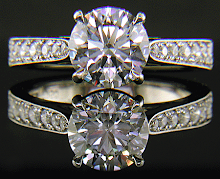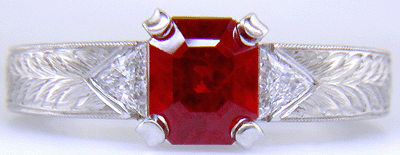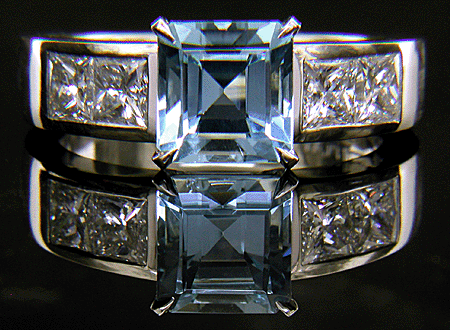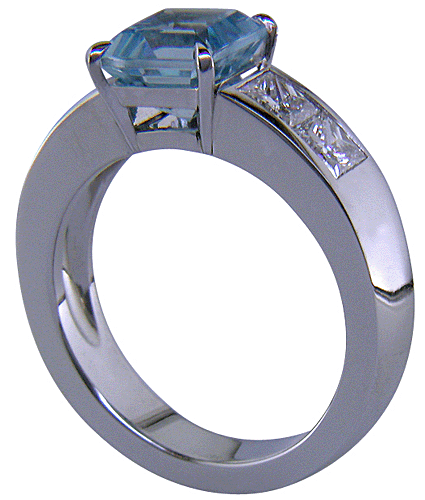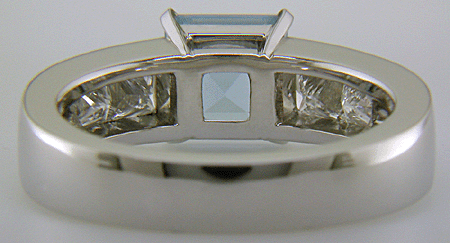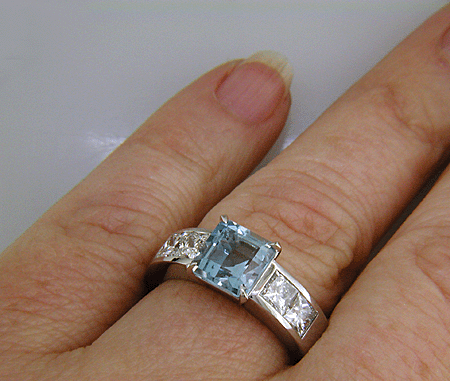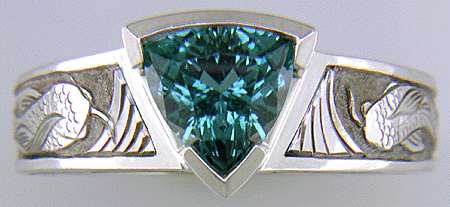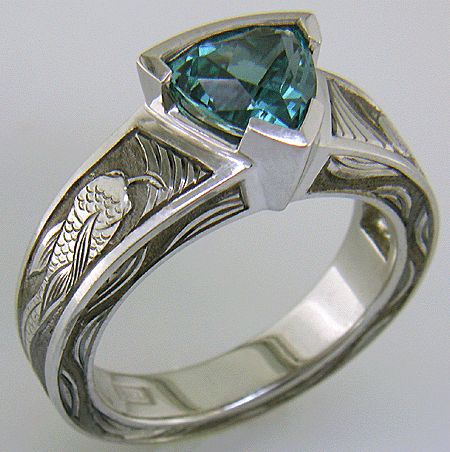The Great Ruby Hunt
Part I - The Hunt Begins
We made the above Ruby and Diamond ring for a client who wanted to create an exceptional engagement ring. The first step in the project was to discuss and develop with the client an initial design of the ring. Once the initial design was decided upon, we turned to the second most important task, helping our client find a gorgeous Ruby for the stone. Fortunately, we offer a Gemstone Research Service to help clients find and purchase just the right gemstone for their custom rings.
I thought it would be helpful to describe the process we follow when helping clients locate and evaluate gemstones for their custom design projects.

The first step is to help the client decide what characteristics of the gemstone are most important. For the Ruby and Diamond ring the client wanted a Ruby that was a classic Emerald-cut and about 1 ½ carats in weight. She would also consider beautifully cut oval and cushion shape stones. But, her most important criteria was the color. She desired a Ruby that was a classic pure red.
Once the specifics of the desired gem were set, I interviewed a number of fine Ruby dealers and cutters about the stones available in the marketplace. These gem dealers know our exacting standards and presented their best stones. The Rubies that best fit the client's criteria were selected and shipped to our gallery.
As each Ruby arrived, it was closely examined in our gemological laboratory. Several of the gemstones did not make the initial cut and were returned to the gem dealers. Our goal is to present only the very best gems to the client.
When performing a detailed analysis of a gemstone, I examine each of the important components that contribute the gems beauty and value. With colored gemstones, like Ruby, the most important component is the color grade which can comprise 90% of a stone's value.
When I evaluate the color of a gemstone, I consider three components: the gem's Hue, Tone and Saturation.

Hue is the actual spectral color of a gem. Our client desired a pure red Ruby; however natural Rubies are rarely a single color. Most rubies are a blend of two or more colors. Rubies can be a pure red, or be modified by orange or purple, the colors that lie on either side of red on the color wheel. At this stage, my job was to eliminate the Rubies with an overly modified color.
The second component of the color grade, Tone, relates to the lightness or darkness of the color. Some gemstones are found within a narrow range of tones, while others can occur in a full range of tones from nearly colorless to nearly black. The goal is to find the right tone based on the client's preference. Some people prefer a lighter pinker shade of red, while others desire a darker stone. Our goal is to find the best stone that meets the client's desires.
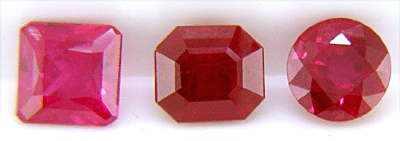
While there are many honest people in the gemstone industry, I err on the side of caution and independently verify a gem's quality grades. Some dealers will misrepresent the color grade in order to sell the gem to a less knowledgeable buyer. Our job is to ensure that the gemstones considered by the client have been accurately described and fairly evaluated.
For example, one of the alleged Rubies sent to us by a cutter had a lighter tone that, in my opinion, placed it into the Fancy Pink Sapphire Category. The dealer had represented it as a Ruby, but as you can see in the above photo, the Princess cut gem on the left is quite pink. And while this is a beautiful gem in its own right, it is not what the client desired, and it did not warrant the name "Ruby" nor the same per carat price as a true Ruby color.
The third color component is Saturation (sometimes called Intensity). Saturation is critical to a gemstones overall color grade. This is the purity of the color .... the Ooomph, the Pizzazz. The intensity of warm colors (like Orange and Yellow) tend to be weakened by degrees of brown, while cooler colors (like Blue or Violet) tend to be modified by gray. At the lowest saturation level the gem appears brown or gray. At the top saturation level the gemstone really pops with vivid color.

In my next post I will describe how we worked with the client through the process of reviewing the subtle differences in Hue, Tone and Saturation that affect the beauty of a gem and how we helped our client select the best Ruby for her ring. Be sure to come back for the "The Great Ruby Hunt - Part II".
And, of course, if you have any questions or comments, please let me know.

